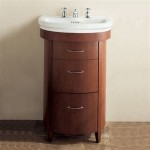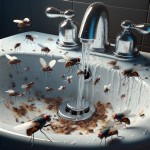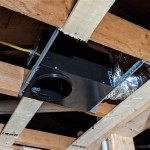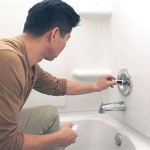Odor detection can be a valuable indicator of underlying issues within a residential or commercial property. One particularly concerning odor is that of sewer gas. Detecting a sewer gas smell in the bathroom is a common occurrence, but it is crucial to understand the potential reasons behind it and take appropriate action. Sewer gas itself is a complex mixture of gases produced during the decomposition of organic waste matter. While exposure to low concentrations is often only a nuisance, prolonged or high-level exposure can pose health risks.
What Does It Mean When You Smell Sewer Gas In Your Bathroom?
The presence of a sewer gas smell in a bathroom typically indicates a problem within the plumbing system that is allowing these gases to escape into the living space. Understanding the potential sources of the smell and taking prompt action is crucial to resolving the issue and preventing potential health hazards. Some gases composing the mixture are hydrogen sulfide, ammonia, methane, carbon dioxide, and nitrogen dioxide. Hydrogen sulfide, even in low concentrations, is often responsible for the characteristic "rotten egg" smell associated with sewer gas.
Dried-Out or Defective P-Traps
A primary suspect when sewer gas is detected in a bathroom is the P-trap. The P-trap is a U-shaped pipe located under every sink, toilet, shower, and bathtub drain. Its function is to hold a small amount of water, which acts as a barrier, preventing sewer gases from rising up through the drain and into the bathroom. If the water in the P-trap evaporates, is siphoned away, or the trap itself is faulty, sewer gases can freely enter the room.
Several factors can contribute to a dried-out P-trap. Infrequent use of a particular fixture is a common cause. For example, a guest bathroom that is rarely used may have drains with dried-out P-traps. Over time, the water in the trap simply evaporates, removing the protective barrier. Ventilation can also play a role; particularly in dry climates, increased airflow can accelerate evaporation. Design flaws in the plumbing system can also contribute.
Siphoning occurs when the water in the P-trap is sucked out due to pressure changes in the drain pipes. This often happens when a toilet flushes, or a large volume of water is drained quickly from a sink or bathtub. Improper venting in the plumbing system is frequently the culprit behind siphoning. Vent pipes are designed to provide air circulation to the drain pipes, preventing negative pressure that can siphon water from the P-traps.
A defective P-trap, such as one that is cracked or improperly installed, can also lead to sewer gas leaks. Cracks in the P-trap itself allow gases to escape directly into the surrounding area. Moreover, a poorly fitted P-trap may allow water to slowly leak out, eventually depleting the water barrier and allowing sewer gases to enter the bathroom.
To address a dried-out P-trap, simply running water into the drain for a few minutes should refill the trap and restore the water barrier. If siphoning is suspected, a qualified plumber should inspect the venting system to identify and correct any issues. A defective P-trap will need to be repaired or replaced by a professional plumber.
Vent Pipe Issues
The plumbing vent system is a critical, often overlooked, component responsible for maintaining proper air pressure within the drain lines. Vent pipes typically extend from the drain lines up through the roof of the building. Their primary function is to allow air to enter the plumbing system, preventing the formation of vacuums that can siphon water from P-traps. They also allow sewer gases to vent harmlessly outside, rather than entering the building. When vent pipes are blocked, damaged, or improperly installed, sewer gas odors can permeate the bathroom.
Blockages in vent pipes can arise from various sources. Debris such as leaves, bird nests, or even dead animals can obstruct the vent opening on the roof, preventing proper airflow. Ice accumulation during winter months can also cause blockages. Additionally, internal obstructions caused by corrosion buildup, or even objects accidentally introduced into the vent pipe, can impede the venting process.
Damage to vent pipes can occur due to weather exposure, physical impact, or age-related deterioration. Cracks, leaks, or breaks in the vent pipe can allow sewer gases to escape into the attic, walls, or other areas of the building, eventually making their way into the bathroom. Improper installation of the vent system is another potential issue. Incorrect pipe sizing, improper slope, or inadequate support can all contribute to venting problems.
Diagnosing vent pipe problems often requires a professional plumber. A plumber can perform a visual inspection of the vent system, checking for blockages, damage, and improper installation. They may also use specialized equipment, such as a smoke test, to identify leaks in the vent pipes. Addressing vent pipe issues typically involves removing blockages, repairing or replacing damaged sections of the vent system, or correcting any installation errors. Ensuring proper vent system function is essential for preventing sewer gas odors and maintaining a healthy indoor environment.
Sewer Line Breaks or Leaks
While less common than P-trap or vent pipe issues, sewer line breaks or leaks can be a significant source of sewer gas odors in the bathroom. The sewer line carries wastewater away from the building to the municipal sewer system or a septic tank. If this line develops a crack, leak, or complete break, sewer gases can escape into the surrounding soil and eventually seep into the building's foundation, walls, and ultimately, the bathroom.
Sewer line damage can result from several factors. Aging pipes are susceptible to corrosion and deterioration, leading to cracks and leaks. Root intrusion from nearby trees or shrubs is another common cause. Roots can penetrate small cracks in the sewer line and gradually expand, worsening the damage and potentially causing a complete break. Ground shifting or settling can also put stress on the sewer line, leading to cracks or breaks. Additionally, accidental damage during excavation or construction work can compromise the integrity of the sewer line.
Identifying a sewer line break or leak can be challenging, as the symptoms are not always obvious. In addition to the sewer gas smell, other potential indicators include slow drains, frequent toilet backups, or the presence of sewage in the yard. A professional plumber can perform a camera inspection of the sewer line to identify any cracks, leaks, or other damage. Hydro jetting can reveal damage as well.
Repairing a sewer line break or leak is typically a complex and costly undertaking. Depending on the extent of the damage and the location of the break, the repair may involve excavation and replacement of the damaged section of the sewer line. In some cases, trenchless repair methods, such as pipe lining, may be used to repair the sewer line without the need for extensive excavation. Promptly addressing sewer line issues is crucial to prevent further damage, minimize health risks, and restore proper wastewater flow.

7 Causes Of A Sewer Smell In The Bathroom Hays

My Bathroom Smells Like A Sewer What Causes That And How Do You Fix It Kitchen Infinity

Sewer Smell In Bathroom Solved Bob Vila

What Causes A Sewer Smell In The Bathroom Make It Right

Why Is There A Sewer Odor In My Bathroom Ben Franklin Bay Area

All About Sewer Gas Exposure Causes Symptoms Treatment More

Why Does My Toilet Smell Like Sewage 5 Causes Solutions

Septic Stench What That Rotten Egg Smell Means And To Do About It Flohawks Plumbing

Five Reasons Your Bathroom Smells Like A Sewer The Plumbette

Sewer Smell In Bathroom Identify And Eliminate The Odor
Related Posts







